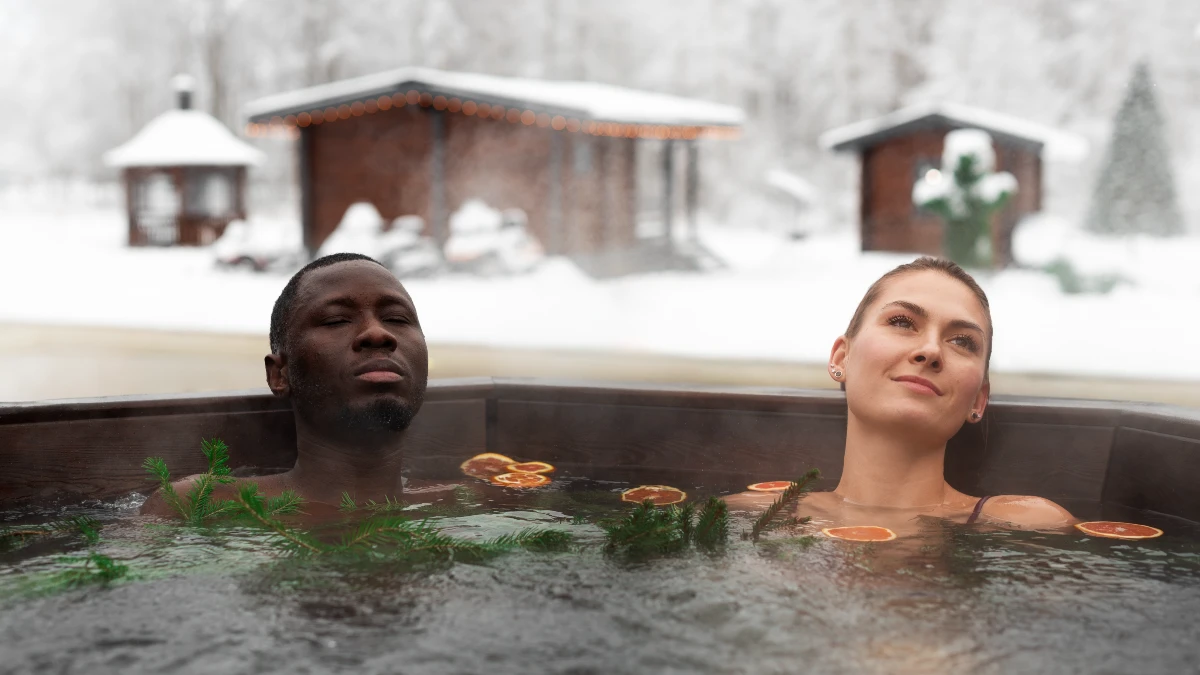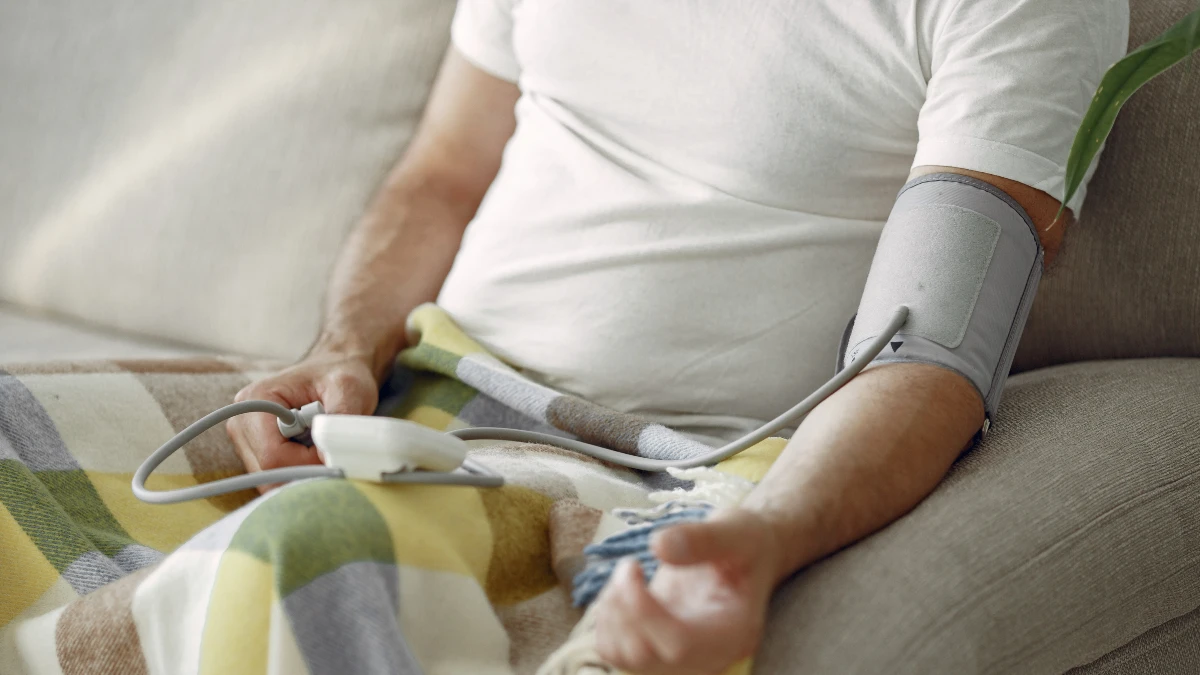You finished a brutal workout, but your recovery plan might be sabotaging your gains. That agonizing ice bath, praised for recovery, could actually be stopping your muscles from growing. The intense cold that numbs soreness can also blunt the critical signals for muscle repair and growth.
There is a smarter, more comfortable solution. Contrast Water Therapy delivers powerful recovery by actively “pumping” your circulation to flush out waste and speed up healing. This guide reveals how this simple method offers all the benefits without the painful shock or the risk to your hard-earned progress.
Beyond the Plunge: Rethinking Recovery Without the Shock
The Science of “Healthy Stress”: Unlocking Cold Therapy Benefits
What is Hormesis?
Hormesis is the biological process where a low dose of an otherwise harmful stressor induces an adaptive response in the body, making it more resilient and stronger. Think of it as “what doesn’t kill you makes you stronger” for your cells.
Key Benefits Triggered
Cold exposure, as a hormetic stressor, triggers powerful anti-inflammatory responses and a surge in beneficial neurochemicals. This helps reduce muscle soreness, boost mood, and enhance cognitive function.
Cryotherapy vs. Ice Baths
Whole-Body Cryotherapy (WBC) uses extremely cold, dry air (-110°C to -140°C) for 2-4 minutes, avoiding the deep tissue cooling of ice baths. This allows for quicker recovery post-session and is often perceived as more tolerable than wet cold.
Cellular & Skin Health
Beyond muscle recovery, cryotherapy has been linked to increased collagen production, which can improve skin elasticity and health. It also activates genes associated with longevity and cellular repair mechanisms.

The core benefit of any cold therapy stems from a biological principle called hormesis, or “healthy stress.” It’s the deliberate application of a mild stressor that forces the body to adapt, becoming stronger and more resilient in the process.
While a traditional ice bath is a very direct, and often shocking, way to achieve this, the goal isn’t discomfort itself. But the powerful anti-inflammatory and neurochemical response it triggers.
The good news is that alternative methods can provide a significant portion of these benefits by applying this stress in a more controlled, tolerable, and targeted manner. Separating the physiological reward from the mental barrier of the plunge.
For those seeking a high-tech solution, Whole-Body Cryotherapy (WBC) is a leading alternative that cleverly bypasses the discomfort of wet cold. By standing in a chamber of dry air cooled to -140°C for just 2–4 minutes The body’s skin receptors are tricked into signaling a survival state.
This triggers a massive nervous system response and a profound rush of blood to the core. Unlike an ice bath, which can cause deep muscle tissue to congeal and require rest. The dry cold doesn’t deeply freeze the muscles, allowing for a quicker return to activity.
Some research even indicates this dry method boosts collagen production, a unique benefit for skin health.
Why Ice Baths Are So Popular (And Why They’re So Hard)

You see ice baths everywhere these days. Top athletes like LeBron James and Cristiano Ronaldo use them to help their bodies recover. Health experts also talk about how great they are for your mind and body.
The ice bath isn’t just for pro athletes anymore. It has become a huge trend. Public interest has shot up, and the cold therapy market is worth billions of dollars. This shows that people are looking for ways to feel better and stronger.
The Cold Plunge Trend
Big names have made cold therapy popular. Neuroscientist Dr. Andrew Huberman explains its benefits to millions of people. Wim Hof, known as “The Iceman,” has a huge following for his mix of cold water and breathing exercises.
The message is simple: facing the cold can help you perform better. It’s not just about being tough. It’s about using a natural stress to make your body stronger.
How Ice Baths Actually Work
There is real science behind why ice baths, or Cold Water Immersion (CWI), work. When you get into very cold water, your body goes into survival mode. Here’s what happens:
Blood Vessels Tighten
The blood vessels near your skin get smaller. This pushes blood to your core to keep you warm. It also means less blood flows to your muscles, which helps reduce swelling and soreness after a tough workout.
Pain Relief
The cold numbs your nerves. This slows down pain signals, giving you quick relief from aches.
Slower Cell Activity
The cold temperature slows down the activity in your muscle cells. This can prevent extra damage that sometimes happens after a workout.
Besides these physical benefits, the shock of the cold is a form of good stress. It makes your brain release powerful chemicals. For example, studies show cold exposure can boost dopamine by 250%.
Dopamine helps with mood, focus, and motivation. This good feeling can last for hours, which is a big reason why people love ice baths.
The Big Problem: The Pain
Even with all the science and famous fans, there’s a big reason why not everyone takes ice baths: they are very uncomfortable. The experience can be painful. It takes a lot of mental strength to get through the initial shock and stay in the cold.
This isn’t a sign of weakness. It’s just how our bodies work. The same stress that gives you the benefits is also a warning sign. Your body is telling you that it’s in a dangerous situation.
This creates a problem. Many people want the benefits of cold therapy, but the pain makes it too hard to do regularly. And to get real benefits from any health habit, you have to be consistent.
So, what if there was a way to get most of the benefits without the pain? There is. It’s a different kind of water therapy that is much more comfortable.
A Better Way to Recover: The “Vascular Pump”

An ice bath uses one long, cold shock to help you recover. A better alternative, called Contrast Water Therapy (CWT), uses a mix of hot and cold to get great results. This isn’t a new idea. It has been used for a long time in places like Finland, where people move between hot saunas and cold lakes.
What Is Contrast Water Therapy?
Contrast Water Therapy is simple. You switch back and forth between warm water and cool water. Instead of one long, painful shock, CWT gently guides your body through a cycle of opening and closing its blood vessels.
This creates a special response that is different from just using cold water. It works with your body’s blood flow instead of just shutting it down.
The Science of the “Pump”
The real magic of CWT is something called the “vascular pumping effect.” It’s like a workout for your blood vessels, driven by the quick changes in temperature. Here’s how it works:
The Heat Phase: When you get into warm water, your blood vessels open up. This is called vasodilation. It brings more blood, oxygen, and nutrients to your muscles, which helps them heal.
The Cold Phase: When you switch to cold water, the opposite happens. Your blood vessels get smaller. This is called vasoconstriction. It helps reduce swelling and soreness, just like an ice bath.
The “Vascular Pumping Effect”: The back-and-forth switching creates a powerful pump in your body. It has been described as “flushing a fire hose through your system.” This action pushes out waste products, like lactic acid, that build up in your muscles after a workout. At the same time, it pulls in fresh, oxygen-rich blood to speed up repairs.
This isn’t just a theory. One lab study looked inside the muscles of people doing contrast therapy. The results showed that CWT really does increase blood flow and oxygen deep inside the muscle.
This is a key difference. An ice bath mostly slows things down, like swelling and pain signals. Contrast therapy actively helps your body clean out waste and bring in nutrients. This makes CWT a powerful tool for more than just muscle repair. It can also improve your overall circulation.
Contrast Therapy vs. Ice Baths: Which Is Right for You?

To choose the best recovery method, you need to compare these two options directly. They are both types of water therapy, but they work differently and feel very different. The best choice depends on your goals and what you can handle.
A Clear Comparison
An ice bath is great at numbing pain right away. The intense cold is a powerful painkiller. So, if you just finished a marathon or a big game and feel really sore, an ice bath can make you feel better fast.
Studies show that contrast therapy is better at cleaning out the physical markers of muscle damage, like a substance called Creatine Kinase (CK).
This is an important difference. Feeling less sore is great, but it’s a feeling. CK is a real measure of muscle damage. So, while an ice bath might be better at hiding the pain, contrast therapy seems to be better at the actual cleanup and repair job.
Contrast therapy is also much less painful. The experience is much easier to handle, and some people even find it pleasant. An ice bath is extremely uncomfortable and takes a lot of willpower. This means you are much more likely to do contrast therapy regularly.
What About the “90% Benefit” Claim?
The idea that contrast therapy gives you “90% of the benefits with zero discomfort” is a simple way to explain its value. It’s not a hard number from a study, but it’s based on two key ideas.
First, both methods give you similar core benefits. They both reduce swelling, ease muscle soreness, and speed up recovery. They can both make you feel more clear-headed. Contrast therapy gives you access to all these good things.
Second, and more importantly, is consistency. The best recovery tool is the one you actually use. Because ice baths are so hard to do, most people only use them once in a while.
Contrast therapy is much more comfortable, so it’s easier to make it a regular habit. A good therapy you do all the time will always give you better results than a great therapy you rarely do. In that sense, contrast therapy delivers most of the benefits because it’s a tool you’ll stick with.
The Big Risk of Ice Baths: Are You Killing Your Muscle Growth?

If your goal at the gym is to build muscle or get stronger, you need to know about a hidden risk of ice baths. A lot of research shows that they can actually stop you from getting the results you work so hard for. This makes the choice between contrast therapy and ice baths about more than just comfort. It’s about what works for your fitness goals.
The Muscle Growth Warning
When you lift weights, you create tiny tears in your muscle fibers. This causes a little bit of swelling, which is what makes you sore. This swelling is not a bad thing. It’s a signal that tells your body to start repairing and building the muscle, making it bigger and stronger. This process is called hypertrophy.
The problem is that ice baths are too good at stopping this swelling. By killing this important signal, regular ice baths after a workout can get in the way of muscle growth. The science is very clear on this:
One 12-week study had two groups of men do strength training. One group took an ice bath after each workout, and the other group did a light cool-down. The group that did the light cool-down gained much more muscle and strength than the ice bath group.
Other studies have confirmed this. They show that taking an ice bath right after lifting weights can lead to smaller gains in muscle size and strength over time.
Research shows that ice baths can block the key signals for muscle growth for up to two days after a workout.
What the Experts Say
Top experts agree. Dr. Andrew Huberman recommends waiting at least four to six hours after a strength workout before getting in cold water. This gives your body time to start the muscle-building process.
This is a big problem for people who lift weights and then immediately jump into an ice bath. They are using a recovery method that works against their main goal.
This is where contrast therapy is the smarter choice. The research that shows muscle growth is blocked is specifically about ice baths. There is no similar proof that contrast therapy has the same bad effect.
Because contrast therapy actively improves blood flow instead of just stopping swelling, it is the safer and more logical choice for anyone who wants to build muscle.
How to Start Contrast Therapy Today (It’s Easy)

The best thing about contrast therapy is that anyone can do it. You don’t need special gear, and you can adjust it to your own comfort level. You can start right now.
The Beginner’s Method: The Contrast Shower
If you’re new to this or don’t have a bathtub, a contrast shower is the perfect way to start. It gives you many of the benefits and helps your body get used to the temperature changes.
Step-by-Step Guide:
Start Warm: Take a normal warm shower for 3 to 5 minutes. This helps you relax and opens up your blood vessels.
Switch to Cold: Turn the water as cold as you can handle for 1 minute. It should be uncomfortable but not a painful shock. Breathe slowly and deeply to stay calm.
Go Back to Hot: Switch the water back to hot for 3 minutes.
Repeat: Do this hot-cold cycle 3 to 5 times.
How to Finish: The temperature you end with depends on your goal.
End on Cold: This is great for the morning. It forces your body to warm itself up, which can boost your metabolism and energy.
End on Hot: This is better for the evening. It leaves you feeling relaxed and can help you sleep better.
The Advanced Method: Full Immersion
If you have a bathtub, you can get a stronger effect by fully submerging your body.
Setup and Temperatures:
Gear: You can use two tubs or one bathtub for the cold and a shower for the hot part.
Temperatures: For the best results, try to use these temperature ranges.
Hot Water: 98°F to 110°F (38°C to 44°C).
Cold Water: 50°F to 59°F (10°C to 15°C).
How Long to Do It:
- A common and well-studied method is a 3:1 ratio of hot to cold.
- A typical session is 3 minutes in hot water, then 1 minute in cold water.
- Repeat this cycle for a total of 15 to 20 minutes.
Safety First:
- Be careful. Don’t use water that is so hot it could burn you.
- If you feel dizzy or sick, stop right away.
- If you have a heart condition or high blood pressure, talk to a doctor before you try contrast therapy. The quick changes can be a strain on your heart.
The Smart Choice for Recovery

The way we think about recovery is changing. The old idea of “no pain, no gain” is being replaced by a smarter approach. The best recovery method isn’t the toughest one. It’s the one that is backed by science, easy to stick with, and matches your long-term goals.
Why Contrast Therapy Wins
When you look at it this way, Contrast Water Therapy is the clear winner. It offers a wide range of recovery benefits. It is powered by the “vascular pump” effect, which is proven to improve circulation and clean out waste from your muscles.
Its biggest advantage is that you can do it consistently. By getting rid of the extreme pain of ice baths, contrast therapy is a habit you can actually enjoy and stick with. This is how you get the best long-term results.
And for anyone who lifts weights, contrast therapy is the intelligent choice. It helps you recover without the risk of hurting your muscle and strength gains. It’s a tool that helps you reach your goals, not one that works against them.
Your First Step
The proof is in trying it yourself. You don’t need to buy expensive tubs or prepare for a painful experience. You can start your journey to smarter, more comfortable recovery today.
After your next workout, don’t even think about an ice bath. Just step into your shower and try a simple 3:1 contrast cycle. Feel the rush of energy, the reduced soreness, and the mental clarity that comes after. It’s time to upgrade your recovery. No shivering needed.


